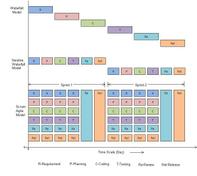Verification vs. Validation: Understanding the Differences
Advertisement
This article clarifies the distinction between verification and validation, two crucial terms in software product testing. While often used interchangeably, they represent distinct processes critical for successful software development.
What is Verification?
Verification focuses on the process of building the software product. It asks the question: “Are we building the product right?”
This means ensuring that development processes are correctly followed to achieve the project’s goals. It’s about adherence to standards, guidelines, and the overall project plan throughout the software development lifecycle.
Verification ensures that the software artifacts (documents, code, designs, etc.) fulfill the requirements and conditions imposed on them in previous phases. Think of it as a process-related activity.
Key aspects of verification:
- Ensures adherence to standards and project plans.
- Focuses on the correctness of the development process.
- Answers the question: “Are we building the product right?”
- Examples: Quality audits, reviews, inspections, code walkthroughs.
What is Validation?
Validation, on the other hand, focuses on the product itself. It asks the question: “Are we building the right product?”
This entails validating the product’s progress over time to ensure that it meets the features and functionalities finalized at the beginning of the project. It’s about confirming that the software fulfills its intended use and meets the needs of the stakeholders.
Validation is the process of determining whether the final, built system or software fulfills its specific intended use and meets the defined requirements. Consider it a product-related activity.
Key aspects of validation:
- Ensures the product meets requirements and intended use.
- Focuses on the correctness and completeness of the product.
- Answers the question: “Are we building the right product?”
- Examples: Testing (unit, integration, system, acceptance), user feedback, demonstrations.
Verification vs. Validation: A Concise Comparison
To summarize, verification is about confirming that you’re building the product correctly_, while validation is about confirming that you’re building the _correct product.
IEEE defines validation as “the process of evaluating a system or component during or at the end of a development process to determine whether it satisfies specified requirements.”
For example, testing is considered a key validation activity.
Advertisement
 RF
RF

